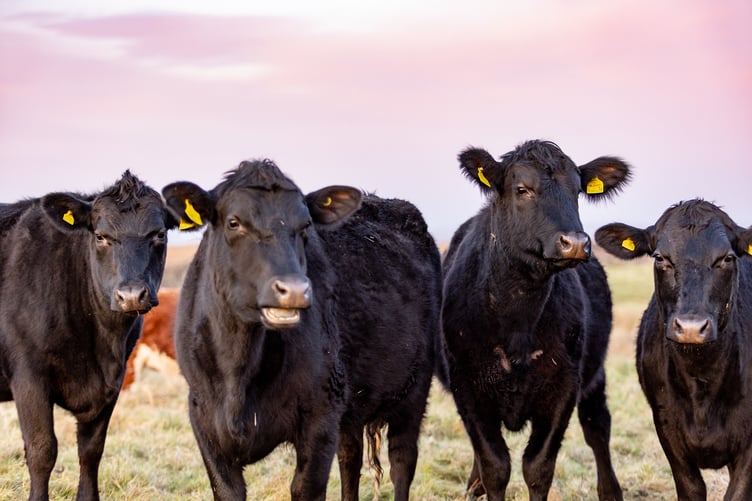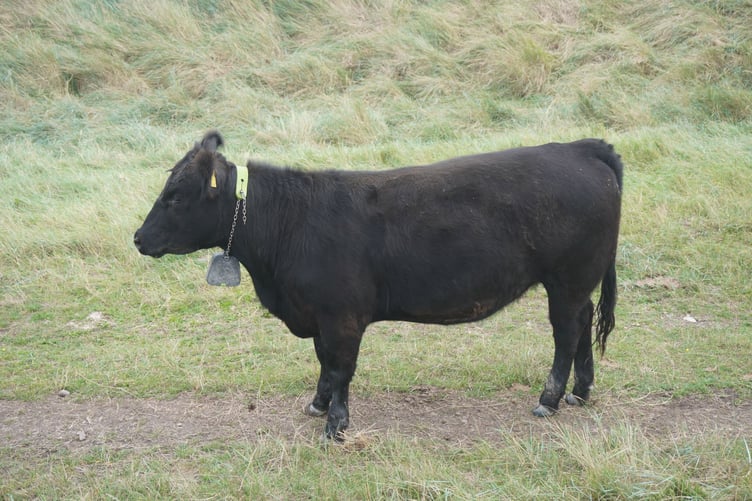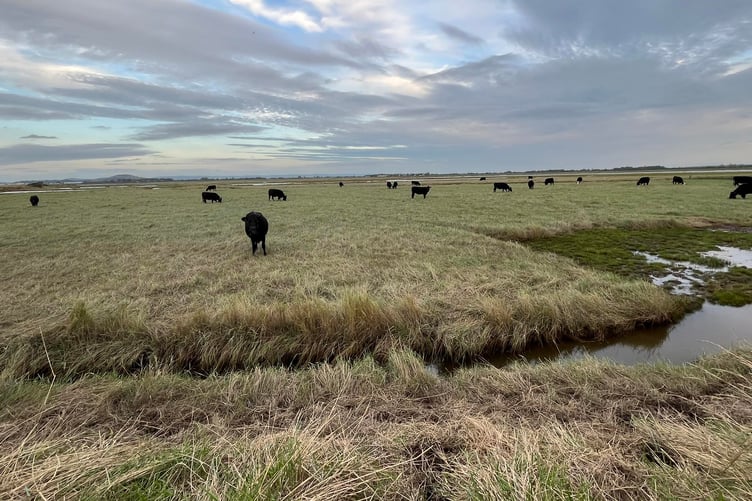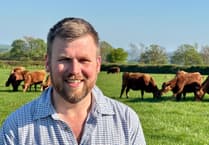SALT marsh beef grazing has been returning to part of West Somerset for the first time in 30 years on land managed by the Wildfowl and Wetlands Trust (WWT).
The Blue Carbon Farming Company now has 20 Angus cattle which will be back on the marshlands of Steart Point, or Fenning Island, as it is sometimes called, from April 1.
It was previously considered too risky to graze because many cattle were lost to the sea, but now Blue Carbon uses modern technology to track and corral the animals.
Blue Carbon was set up by three local farmers Matt Hilton, Andy Darch, and Sam Passmore.
Mr Darch said: “The cattle help improve the quality of the habitat on the salt marsh.
“Having a low number of animals grazing, with light poaching and trampling, helps to break up the dominating sea couch grass.
“This gives the opportunity for other plants and grasses to grow, such as samphire and sea aster.
“By returning the cattle to the marshland we hope the selective grazing of the herbs and grasses will help with a few things.
“The sea couch will be knocked back long enough for other saltmarsh plants to grow.

“With this increase in plant diversity and subsequent photosynthesis, helps to capture carbon to the ground, adding to the amazing carbon sequestration marshlands already do.”
Mr Darch said the cattle had been allowed to graze throughout the area, including some areas of reed beds.
“This may look brutal but it is introducing a variety of age structure much needed to some very rare salt marsh specialist insects,” said Mr Darch.
“We will be working with WWT to ensure there is rotational grazing of these areas to ensure recovery and no long-term damage to this important habitat.
“All this then hopefully encourages more bird friendly plants the birds can graze and nest in, making the habitat more desirable for them.

“Also, cow pats, although frustrating to stand in, are a super, great dollop of deliciousness for the right eyes.
“Food for birds, especially in winter when they are full of dung beetles, are a great home for the dung beetles when not being eaten by birds, and in summer they are great source of water for bees and other insects.”
The Blue Carbon cattle wear what looks like cow bells but are actually GPS trackers called ‘no-fence collars.’
Mr Darch said: “Worried that the landscape is quite treacherous with the mud flats, fast-moving tides, and large scrapes sculpted by the sea where you could easily lose a Land Rover, we wanted to make sure the cattle would be safe.
“The ‘no-fence collars’ enable us to set up an invisible boundary.
“The GPS in the collars connects and when the animal moves close to the boundary, a little tune plays to them as a warning they are at the edge of their safe area.
“If they push too far then they receive a little electric shock.

“It is amazing how they have learnt what the tune means and now very rarely receive a shock.
“We have had our fair share of frustrating moments though.
“Namely, break outs at 2am, lost collars, and other livestock breaking in, which caused mass confusion.
“Every time things like this happen, we get notified through our app and that is when the phone will go mad letting us know there is an issue.”
As well as the cattle being good for insects, birds, and bees, grass-fed beef has extra nutritional benefits for consumers over corn-fed cattle.
Salt marsh grazing means a completely natural diet meaning so the meat will generally be leaner and nutritionally dense.
Grass-fed meat is generally higher in omega-3, rich in vitamin A and E, and has lower amounts of saturated fats.
There are also added antioxidants, which the animals eat when eating the huge variety of grasses which grow on the marshes.





Comments
This article has no comments yet. Be the first to leave a comment.